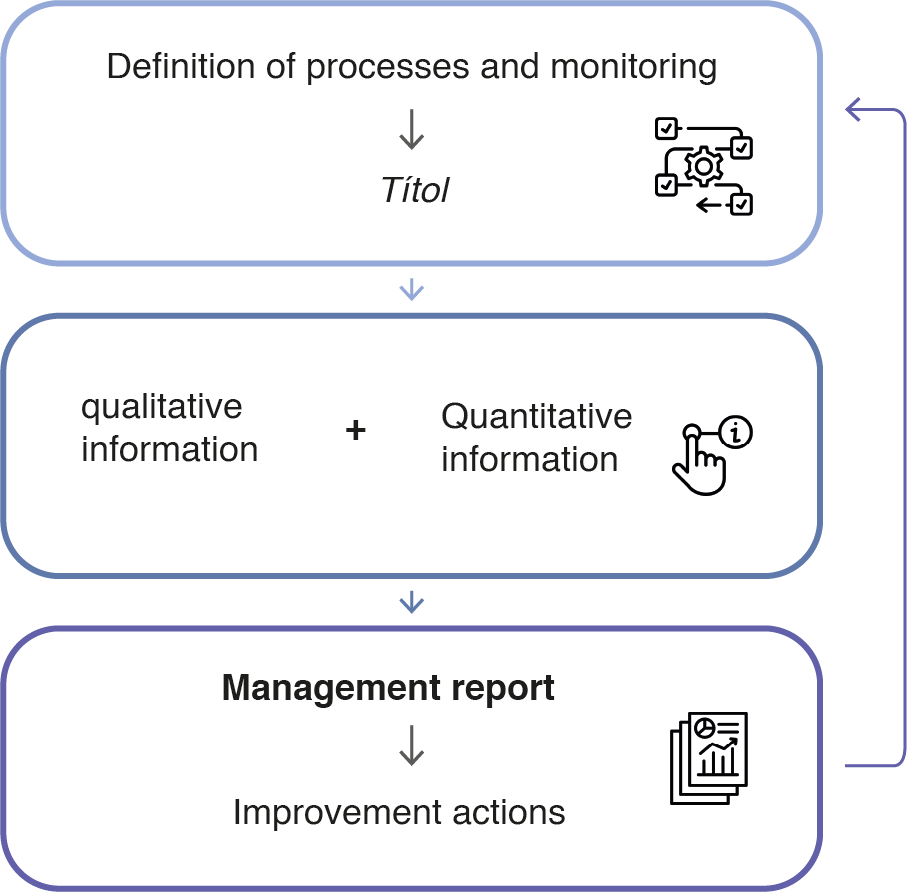
The Internal Quality Management System of the Official Degrees of the UPV (SIGCTi) is the set of planned and systematic actions necessary to guarantee the quality of the official teachings of the UPV, to ensure its control, review and continuous improvement. The SIGCTi includes the quality requirements defined in the state regulations on the organization of official education, as well as the criteria and guidelines of the regional, national and European agencies in the field of evaluation of university education.
Functions
- The design of the training offer.
- The development of teaching and other student-oriented activities.
- The necessary academic and teaching support staff.
- The necessary material resources and services.
- Public information.
- Continuous improvement of the official degrees of the UPV.
Managers
- The Structure Responsible for the Degree (ERT: center, department or institute).
- The Academic Committee of the Degree (CAT, in which the different interest groups participate: those responsible for the degree, students, teaching staff and administration and services personnel).
- The Quality Commission of the UPV (CC).
- Other central organs.

The design of the SIGCTi was certified by ANECA in 2010 within the framework of the AUDIT program. To ensure the correct implementation and development of an official degree, the SIGCTi contemplates three levels of scope:
- Level 1 Definition and documentation of processes and procedures: University, ERT and Management Services, teaching support and R&D&I (the latter, within the framework of the Pegasus Program)
- Level 2 Monitoring of processes and procedures based on quantitative information (activity, performance and perception indicators) and qualitative information (suggestions, complaints and congratulations system and external evaluation reports), as well as any other information that may help identify areas for improvement.
- Level 3 Establishment of actions based on the results of monitoring (Level 2) that will lead to the improvement of the degrees, thus closing the cycle of continuous improvement.
Documents
- Estructura Marco SIQ UPV
- Los procesos de calidad de los títulos oficiales
- Manual Calidad
- Programa AUDIT Informe de Evaluación 2009